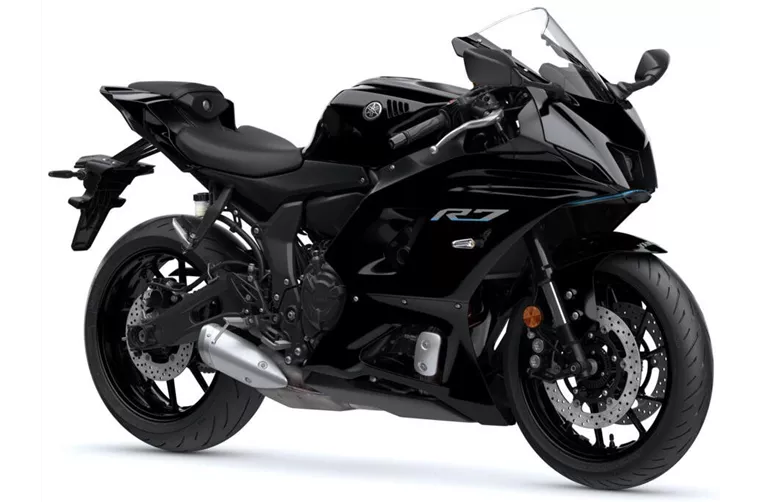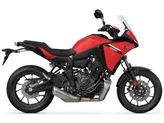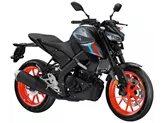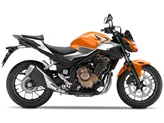Yamaha R7 2022 vs. Yamaha MT-07 2018
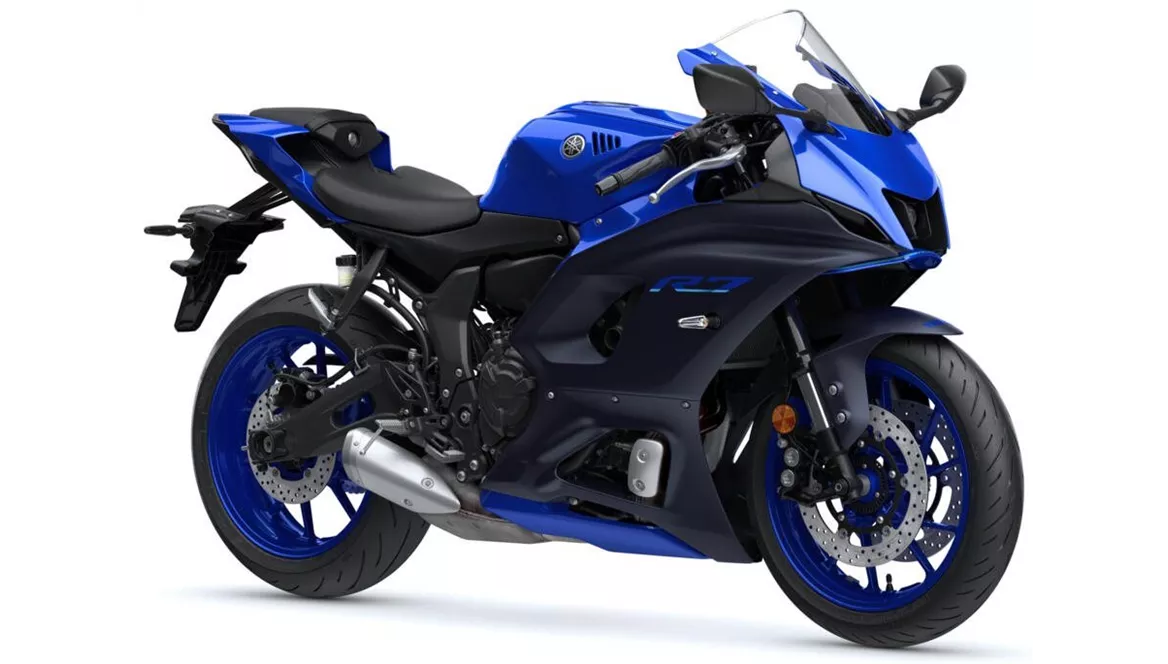
Yamaha R7 2022

Yamaha MT-07 2018
Overview - Yamaha R7 2022 vs Yamaha MT-07 2018
The Yamaha R7 2022 and the Yamaha MT-07 2018 are both impressive motorcycles with their own unique features and strengths. Let's delve into a detailed comparison of these two models.
Starting with the technical specifications, both bikes have the same engine type, bore, stroke, engine power, torque, compression ratio, cylinders, valves per cylinder, valve type, cooling system, and displacement. This means that they share the same fundamental engine characteristics, providing similar performance in terms of power and torque.
In terms of suspension, the Yamaha R7 2022 features an Upside-Down telescopic fork at the front, while the Yamaha MT-07 2018 has a telescopic fork. The Upside-Down fork on the R7 offers better stability and control during aggressive riding, making it more suitable for track use. On the other hand, the telescopic fork on the MT-07 provides a comfortable and smooth ride on the road.

Yamaha R7 2022
Both bikes have a steel frame, ensuring a sturdy and reliable chassis. The front brakes on both models are double disk, offering powerful stopping power. The front and rear tire dimensions are the same for both bikes, with a width of 120mm and a diameter of 17 inches.
In terms of dimensions and weights, the Yamaha R7 2022 has a slightly shorter wheelbase of 1395mm compared to the 1400mm of the MT-07 2018. The kerb weight of the R7 with ABS is 188kg, while the MT-07 weighs slightly less at 182kg. The fuel tank capacity of the R7 is 13 liters, while the MT-07 has a slightly larger capacity of 14 liters.
Moving on to the strengths of each model, the Yamaha R7 2022 excels in its CP2 engine, which provides punchy performance from the lower and middle RPM range. The front-wheel-oriented seating position enhances control and maneuverability, making it a great choice for spirited riding. The adjustable chassis allows riders to fine-tune the bike's handling to their preferences. Additionally, the R7 boasts excellent brakes, ensuring reliable stopping power.

Yamaha MT-07 2018
On the other hand, the Yamaha MT-07 2018 stands out with its extremely agile engine, offering quick acceleration and responsiveness. The lightweight design of the MT-07 makes it highly maneuverable and easy to handle, particularly in tight corners. The aggressive and angular aesthetics of the bike give it a distinctive and sporty look. The powerful brakes provide confidence-inspiring stopping power. The comfortable seating position allows for long rides without discomfort, and the bike produces a throaty sound, adding to the overall riding experience.
In terms of weaknesses, the Yamaha R7 2022 lacks a TFT display, which may be seen as a drawback for riders who prefer advanced digital instrumentation. On the other hand, the Yamaha MT-07 2018 has a slightly softer chassis, which may affect stability during aggressive riding. The footrests on the MT-07 tend to drag quickly in tight corners, limiting the bike's lean angle. Some plastic parts on the MT-07 may feel cheap, and the telescopic fork can be considered less exciting compared to the Upside-Down fork on the R7. The instrument panel on the MT-07 could be improved for better readability.
In conclusion, both the Yamaha R7 2022 and the Yamaha MT-07 2018 are impressive motorcycles with their own strengths and weaknesses. The R7 offers a more track-focused experience with its adjustable chassis and front-wheel-oriented seating position, while the MT-07 excels in its agility, lightweight design, and comfortable riding position. Riders should consider their preferences and riding style to determine which bike suits them best.
Technical Specifications Yamaha R7 2022 compared to Yamaha MT-07 2018
Pros and Cons in comparison
Pros and Cons in comparison
Yamaha R7 2022
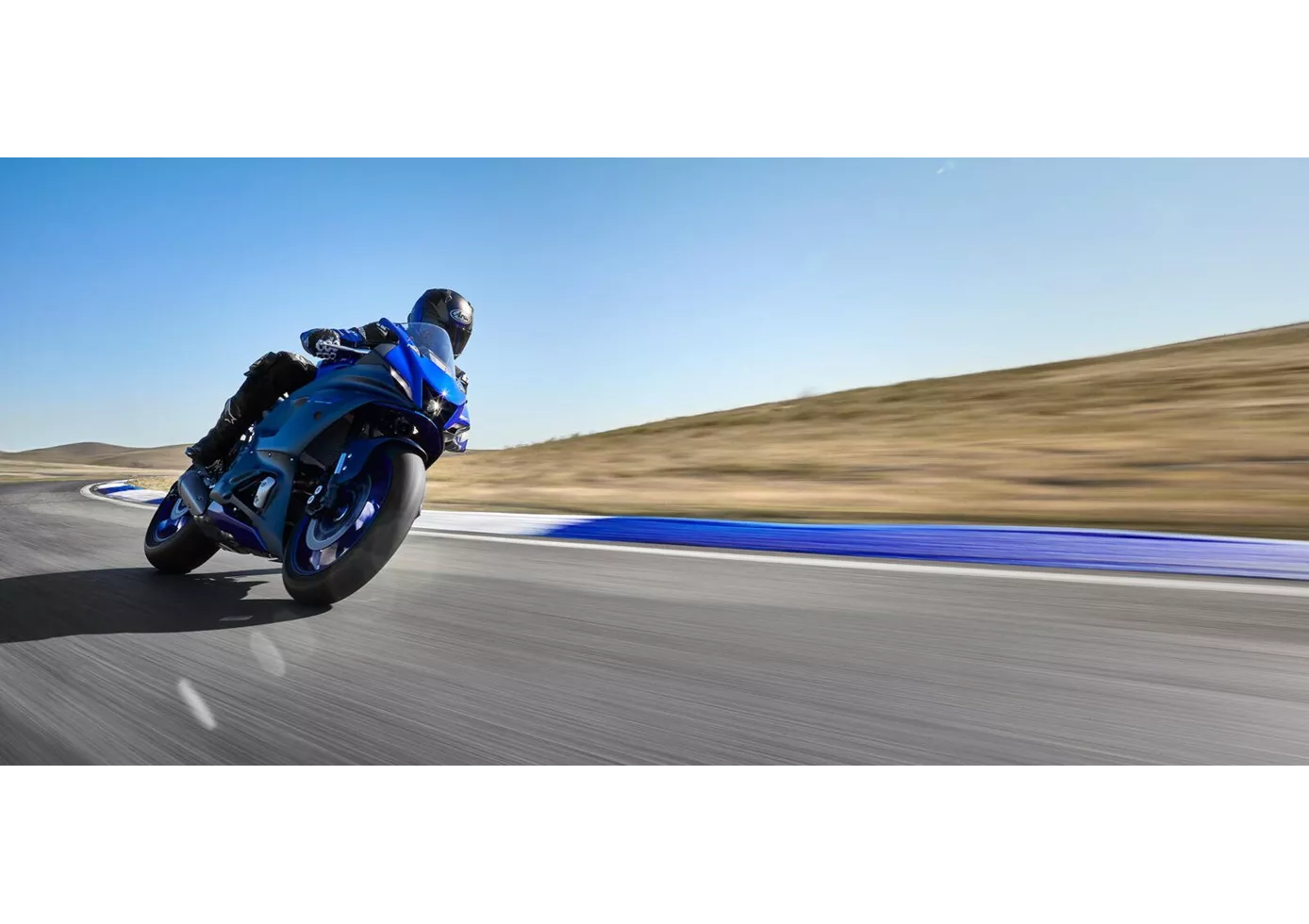
Ceux qui s'attendent à une solution en demi-teinte avec la Yamaha R7 seront surpris de voir à quel point la petite supersportive fonctionne de manière équilibrée. Le moteur d'un peu plus de 70 ch n'a bien sûr pas ce qu'il faut pour défier par exemple l'orgue de vitesse R6, mais c'est justement le moteur avec son punch par le bas qui convient le mieux au caractère. Les composants du châssis sont de très bonne qualité, même entièrement réglables à l'avant, et la maniabilité de la petite grenade est absolument géniale. La position d'assise est correcte, bien moins radicale que sur les vraies supersports, et donc globalement adaptée à la vie quotidienne.
Yamaha MT-07 2018

La MT-07 est une incroyable machine de plaisir qui se laisse conduire de manière extrêmement sportive. Les freins sont très puissants, la maniabilité est excellente et le moteur est de loin le plus agile de sa catégorie - et même au-delà. La maniabilité s'y prête parfaitement et le design agressif avec ses nombreux angles et arêtes peut également plaire. Seul le châssis fait le bon compromis typique entre confort et sport et doit probablement rappeler que la MT-07 bon marché a aussi quelque chose à offrir aux débutants.
Price Comparison Avarage Market Price Yamaha R7 vs Yamaha MT-07
There are a few key differences between a Yamaha R7 2022 and a Yamaha MT-07 2018. In terms of price, the actual average price of a Yamaha R7 2022 is about 45% higher. Compared to Yamaha MT-07 2018 there are more Yamaha R7 2022 bikes available on the 1000PS.de Marketplace, specifically 44 compared to 28. It takes less time to sell a Yamaha MT-07 with 54 days compared to 87 days for the Yamaha R7. Since model year 2021 1000PS.de editors have written 9 reviews for the Yamaha R7 and 69 reviews for the Yamaha MT-07 since model year 2013. The first review for the Yamaha R7 was published on 5/18/2021 and now has more than 92,800 views. This compares to more than 12,600 views for the first review on Yamaha MT-07 published on 11/4/2013.
